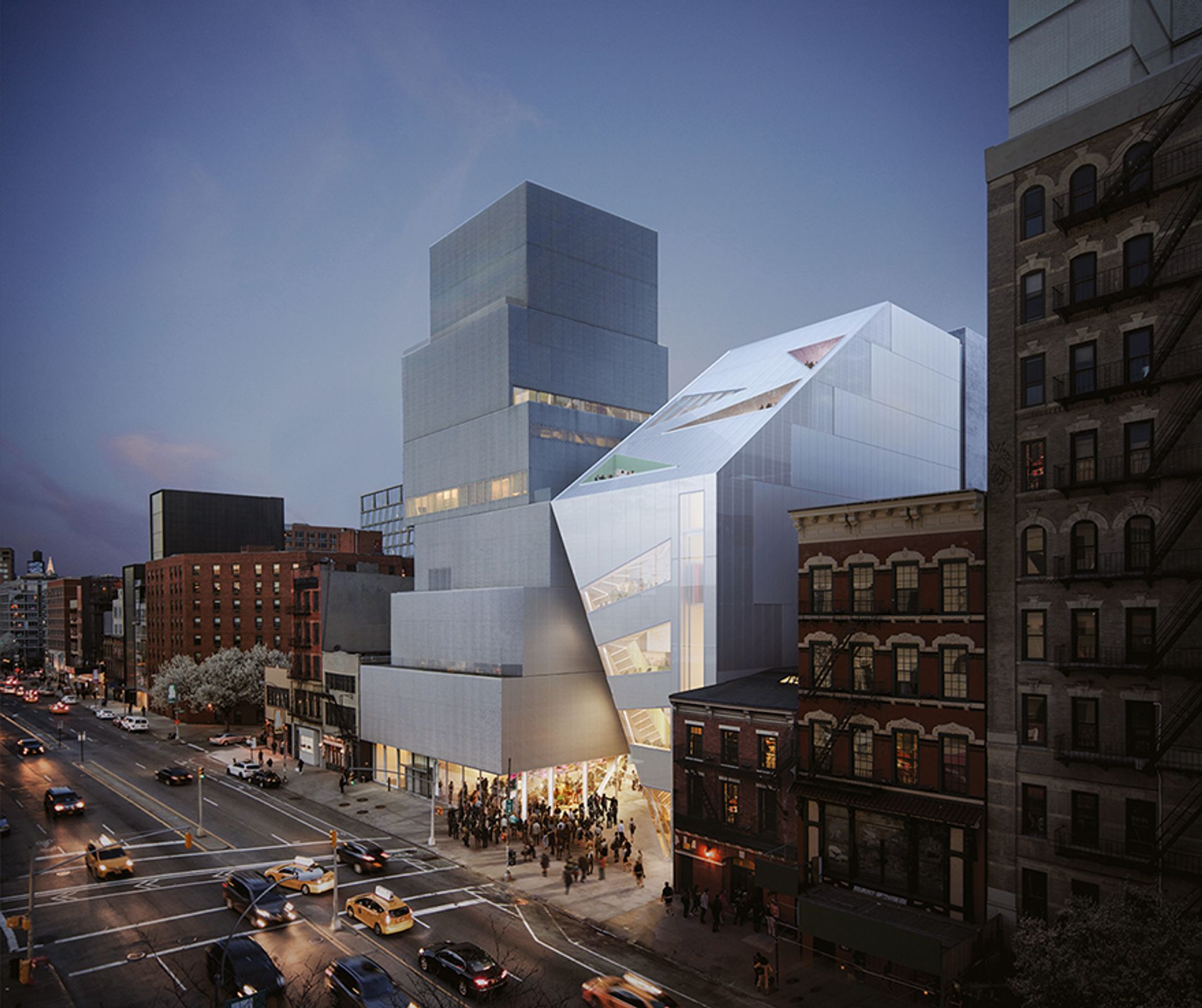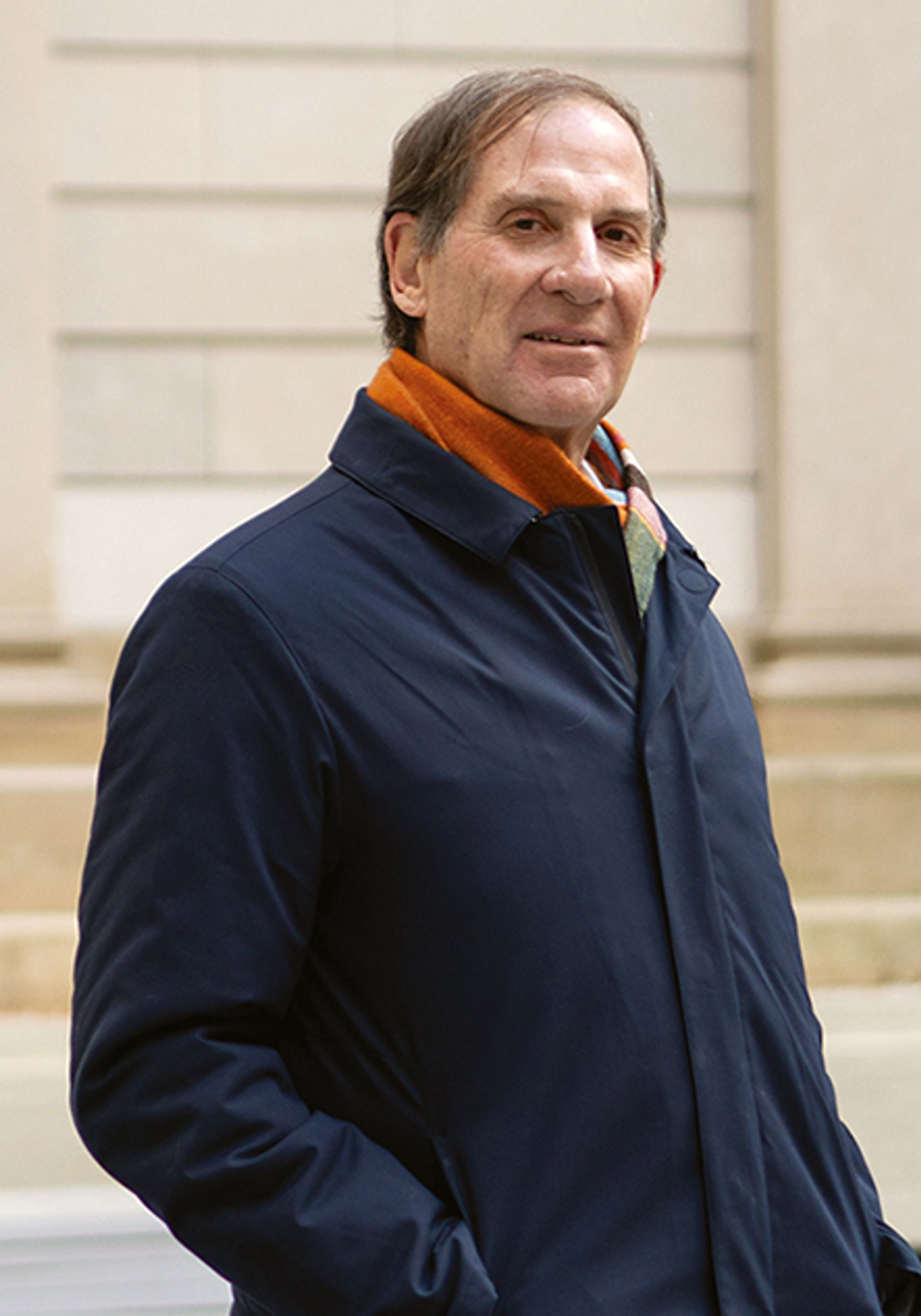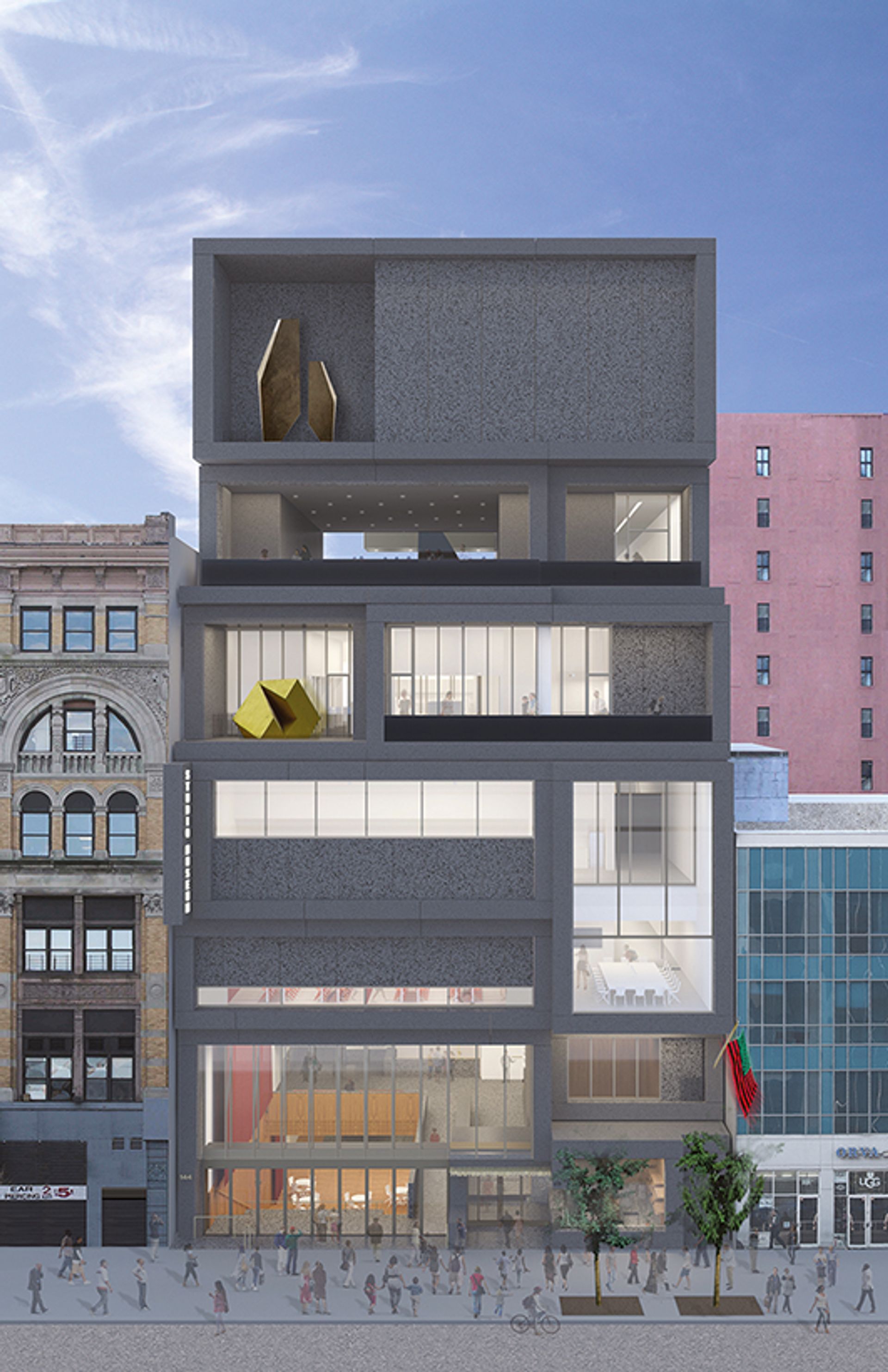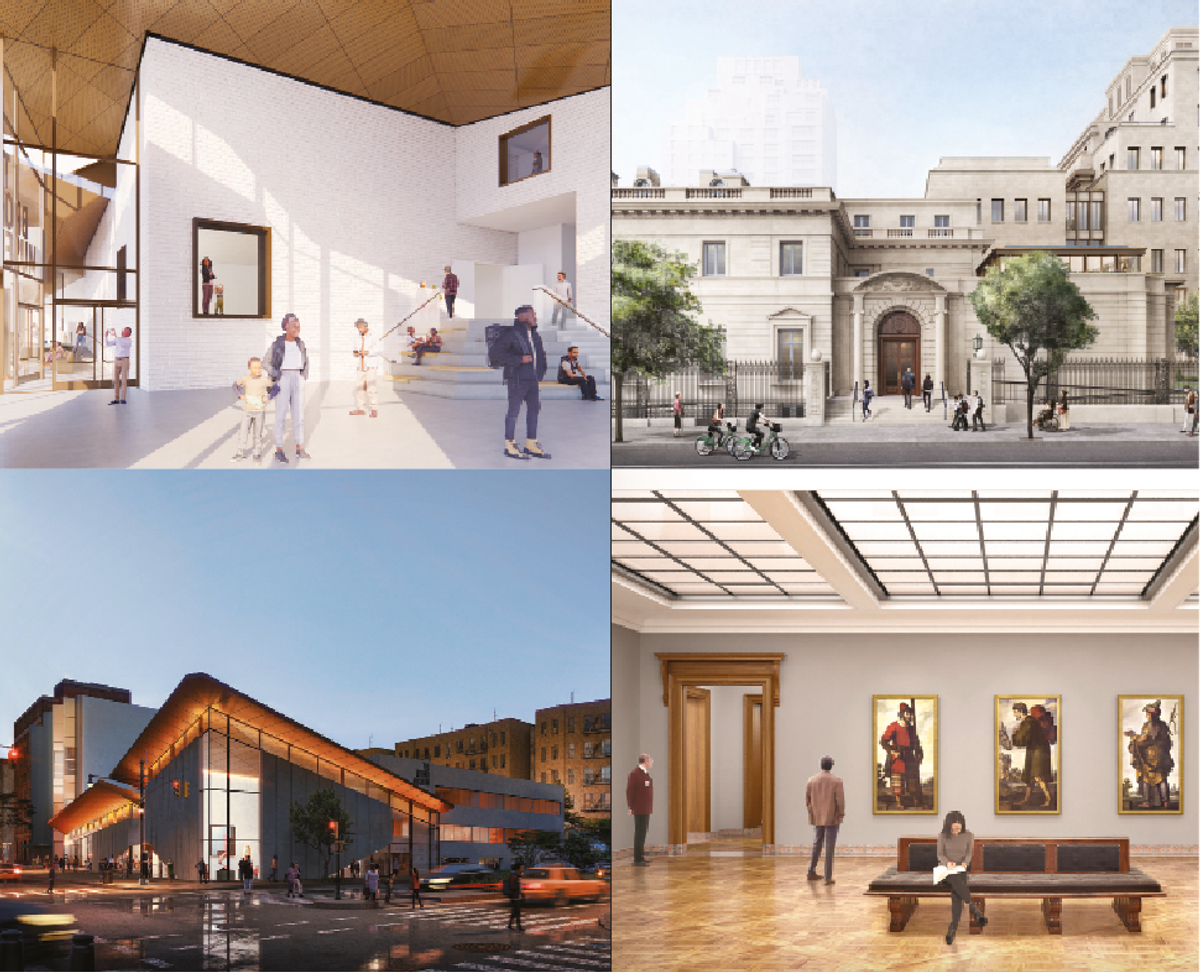New York has witnessed a significant surge in construction projects among its leading museums and art institutions in recent years, signalling a transformative moment for the city’s cultural landscape.
In early 2025 the historic Frick Collection will unveil its highly anticipated $290m renovation and expansion, designed by Selldorf Architects. This project represents the most comprehensive upgrade to the Gilded Age mansion that has housed the museum since its opening in 1935.
Further uptown, construction is progressing on the Studio Museum in Harlem’s new 82,000 sq. ft building, designed by Adjaye Associates and due to open in 2025. Situated on West 125th Street, where the museum has been since the early 1980s, this $300m project is a public-private capital campaign with the city, and will be the first building purpose-built to meet the institution’s and community’s needs.

A seven-storey addition to the New Museum will double exhibition space and includes new venues and an outdoor plaza
Courtesy OMA/bloomimages.de
Also set to open in 2025, the New Museum’s $82m expansion, designed by Rem Koolhaas and Shohei Shigematsu of OMA, is rising at 231 Bowery on Manhattan’s Lower East Side. The seven-storey addition will increase the museum’s footprint by 60,000 sq. ft, doubling its exhibition space and introducing new venues for public programmes, art installations and gathering spaces, including a restaurant and an outdoor plaza.
In July, the Bronx Museum broke ground on a renovation project led by the urban planning and architecture firm Marvel. Supported by city and state funding, the $33m renovation, due to be completed in 2026, will update the building’s facilities, unify the museum campus and improve the visitor experience.
On the horizon
Looking further into the future, several notable renovation and expansion projects are on the horizon. The Kitchen, one of the city’s oldest non-profit spaces exhibiting innovative work by emerging and established artists, is operating from a temporary home at Westbeth Artists Housing while its own building in Chelsea is being renovated. The Metropolitan Museum of Art is embarking on a $500m transformation of its Modern and contemporary art wing, designed by the Mexican architect Frida Escobedo—the first woman to design a wing in the museum’s 154-year history—with a reopening anticipated in 2029. Meanwhile, the Museum of Chinese in America is moving ahead with a $118m expansion project that was first announced in 2022. Originally scheduled to reopen in 2025, the museum extended the project timeline under the leadership of its new president, Michael Lee, who took over in March 2024 following Nancy Yao Maasbach’s departure. An updated completion date is yet to be announced.
Although the needs of each institution are unique and these projects are the culmination of multi-year commitments, the widespread investment in New York’s cultural institutions and the converging timelines of these transformations—particularly following the uncertainty and challenges of the pandemic—reflect broader cultural shifts. The most recent edition of AEA Consulting’s Cultural Infrastructure Index suggests that institutions worldwide are favouring smaller, tactical renovations and expansions over more costly, complex and time-consuming ground-up construction projects, and this certainly holds true in New York. The trend of modernisation and expansion among the city’s art institutions signifies both the evolving expectations of contemporary audiences and the growth of the institutions themselves.
Adapting to the expectations of 21st-century audiences, institutions are reimagining the visitor experience and reframing their programming and facilities. The institutions share several common goals in their respective transformations: addressing pressing institutional needs, enhancing sustainability and accessibility, and updating facilities. By expanding educational programming and improving visitor amenities, these museums aim to enrich the visitor experience while strengthening their connections locally and globally.

Ian Wardropper, director of the Frick Collection, says: “By the time I arrived, the trustees had kind of given up”
Photo by Richard Renaldi
Modernising landmark institutions
At a panel discussion at Tefaf New York in May, Ian Wardropper, the director of The Frick Collection, who has been at the helm for 14 years, recounted discovering blueprints outlining four previous plans to expand the museum, dating back to 1966. “By the time I arrived, the trustees had kind of given up. So nobody said anything to me. I might’ve left it there, except then I started confronting all the problems,” he said.
Confronted with the aging infrastructure and spatial limitations of the building housing The Frick Collection, built in 1914, the comprehensive renovation project aims to address critical structural issues and limitations in exhibition space, updating essential elements while enhancing the museum’s offerings and updating technologies, including acoustics and digitisation.
“The design objectives reflect a dual commitment to preserve the intimate scale and character of the Frick and to upgrade and enhance our facilities to better serve audiences and better care for our collections,” a spokesperson for the Frick tells The Art Newspaper. “Selldorf’s design has called for a series of strategic reconfigurations and additions to create spaces that support the Frick’s urgent institutional needs—including new rooms for exhibitions, education and other public programmes, and conservation—all linked with a clear and intuitive circulation. At the same time, the project has enabled the Frick to modernise outdated and energy-inefficient infrastructure.”
A notable feature of the project is the opening of the museum’s second floor to the public for the first time, allowing access to a greatly expanded collection. The renovation will also create a seamless connection between the museum and its extensive art reference library.
The museum has updated the mansion’s lighting, skylights, electrical wiring and HVAC systems to enhance energy efficiency and protect the art. New interior elevators and wheelchair-accessible ramps will also improve accessibility. The Frick has documented the renovation process in its ongoing series of behind-the-scenes videos, Renovation Stories.
Fostering community
Across the board, the many renovation and expansion projects under way in the city are in pursuit of better meeting the needs of their communities while advancing their roles on a global scale.
Founded in 1968 by a diverse group of artists, community activists and philanthropists, the Studio Museum in Harlem is internationally recognised for promoting the work of artists of African descent. The museum’s new building reflects the character of the surrounding community, drawing inspiration from the neighbourhood’s civic, religious and private gathering spaces—from its historic churches and theatres to the stoops of its brownstone residential buildings.

The Studio Museum in Harlem’s new 82,000 sq. ft building will enable a major expansion of both its programming and outdoor public space
Courtesy Adjaye Associates
“Our new building gives the Studio Museum logistical and programming facilities we have never before enjoyed, all while expressing the character of our vibrant Harlem community and advancing the institution’s global role as the nexus for artists of African descent,” a spokesperson for the museum tells The Art Newspaper. “Space for our educational programmes will more than double, and indoor and outdoor public space will increase by almost 70%.”
Undertaken as a public-private initiative in partnership with the city, the museum’s new home presents opportunities to expand its exhibition offerings, including displaying its permanent collection, while welcoming visitors with updated amenities such as a rooftop terrace with views of Harlem.
Increasingly constrained
“The Studio Museum’s former home on that site was a century-old commercial building that had been donated to the museum and was then adapted by the late, renowned African American architect J. Max Bond Jr,” the spokesperson says. “We thrived in that building and will always honour the memory of Max Bond, but by around 2010 the building was growing worn beyond repair, and the physical limitations for exhibitions and the artist-in-residence programme were more and more constricting.
“Our new building establishes a sense of active engagement with the bustling life along 125th Street through its ‘inverted stoop’, which is accessed directly from the sidewalk through a set of glass doors that can be opened in differing configurations. Everyone will be welcome in this space, where the steps that descend from street level can be used as benches for watching lectures, performances and films presented on the building’s lower level or simply for relaxing in informal gatherings.”
The museum’s renowned artist-in-residence programme was established to allow emerging artists of African and Afro-Latinx descent to create within the context of a community, and so that the Harlem community could engage with contemporary artists first-hand. “In the new building, the suite of artist-in-residence studios is located on the same floor as exhibition galleries and is one floor up from the spaces dedicated to our education programmes,” the spokesperson says. “These adjacencies and visual connections will heighten the exchanges, both planned and impromptu, between our artists in residence and members of the public of all ages.”
A place for communities, dialogue and gathering
Klaudio Rodriguez, the Bronx Museum’s executive director, shares this sentiment, emphasising the roles of cultural spaces in their neighbourhoods and boroughs. “It’s a place for communities, it’s a place for dialogue, it’s a place for gathering,” he says.
The renovation of the building that houses the Bronx Museum—originally constructed as a synagogue and converted into a museum in the late 1970s and early 1980s—represents a significant investment for the largest admission-free contemporary art museum in New York. With substantial funding from the city, the project aims to modernise outdated facilities, enhance energy efficiency and improve accessibility, all while enhancing the museum’s ability to serve its community.
“We needed to modernise and update the infrastructure to meet contemporary standards expected by our visitors, as well as to better protect our art,” Rodriguez says. This includes updating the campus layout to create a more fluid visitor experience, additional exhibition and seating areas, and updates to facilities including enhanced climate control for art preservation and adherence to present-day accessibility and safety standards.
Looking to the future
The wave of expansions across the city’s cultural landscape reflects the institutions’ evolution, each ultimately outgrowing its current facility as it seeks to broaden its programming and public offerings.
“As a major cultural destination and a longtime partner of many other New York non-profit organisations, the New Museum is an anchor for the community and a magnet for activity,” says the museum’s director, Lisa Phillips. “The New Museum was founded in 1977 in a small, one-room gallery on Hudson Street, and over our nearly 50-year history we have continuously expanded our footprint to better serve artists and the public.”
The new building will double the museum’s gallery spaces, and provide a permanent home for its art and technology incubator, New Inc—the first museum-led initiative of its kind. Founded in 2014, New Inc has grown to include more than 600 alumni working across various disciplines. The museum’s expanded space will help it to share this innovative programme with the public. The expansion will also enhance the museum’s family, school and youth programmes with hands-on workshops and an expanded artist-in-residence programme.
“The New Museum has always been a future-facing museum—not a place for preserving and recording history, but a place where history is made,” Phillips says. “Our expanded campus will give us more room for ambitious undertakings, a more dynamic visitor experience, and a platform to continue spotlighting artists’ responses to our world today and visions of where we are heading.”


